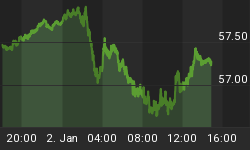A common bacterium that lives in the human gut and can sometimes cause nasty stomach upsets can be used for good, scientists from the University of British Columbia have discovered. In what may well be a first for the solar industry, they genetically engineered a culture of E. coli to make the bacteria produce greater amounts of sun-soaking dye lycopene (the red pigment in tomatoes) and then watched that lycopene degrade and produce an electric current.
Now, from one perspective this is the latest demonstration of the vast range of good uses that bacteria could be put to. From another, it is a cheaper alternative to other ways of harvesting sunlight using bacteria, which basically come down to extracting their sun-soaking pigments.
It sounds kind of cruel if you’re not a bacteria hater: the UBC researchers first genetically modified the microorganisms, then they noticed the pigment degrading, which means it was producing electrons, and they decided to check if the current this degradation produces is meaningful.
To that end, they coated the bacterial culture with a semiconductor and stuck it to a glass surface in a sunny spot. The result: the bacteria produced energy density of 0.686 milliamps per square centimeter. That’s 0.324 milliamps more than previous bacteria-based solar cells, and it was produced more cheaply. Related: The U.S.-Chinese Race To End All Privacy
While the phrase “low cost” is always attractive, it is uncertain at this point what the actual savings would be if the technology could be developed at scale. But what could make this bionic solar cell a hit in the future is the fact that the genetically modified E. coli could soak sunlight just as well under an overcast sky as under a sunny one. This means bionic solar cells could be used in places where the weather conditions are not suitable for synthetic PV panels.
Also, they could potentially be used in low-light environments such as mines. “Exploring low-light environments such as mines requires the use of sensors that could be powered with biogenic cells such as the one we have developed,” one of the lead authors of the study, chemical engineer Vikramaditya Yadav, told Digital Trends. He added, however, that “the cells that we have developed are a ‘generation one’ device that needs significant improvements and optimization before it can reach the levels of silicon solar cells.” Related: Experts Suggest A Gold Shortage May Be Looming
One big problem with the current process—which the researchers estimate costs a tenth of the dye extraction methods—is that applying a semiconductor to the bacteria kills them (that’s the cruel bit), so the process of lycopene production cannot be sustained. Yet the scientists are hoping they will be able to find a way to keep the bacteria alive to make the process sustainable.
Scaling the biogenic cells could also be tricky: E. coli’s natural habitats do not include plain glass surfaces in the open air. Yet if the scientists find a way to keep the bugs alive and multiply, this cell could become a real alternative to existing synthetic cells, not least because it has comparable efficiency rates.
By Irina Slav for Oilprice.com
More Top Reads From Safehaven.com:

















